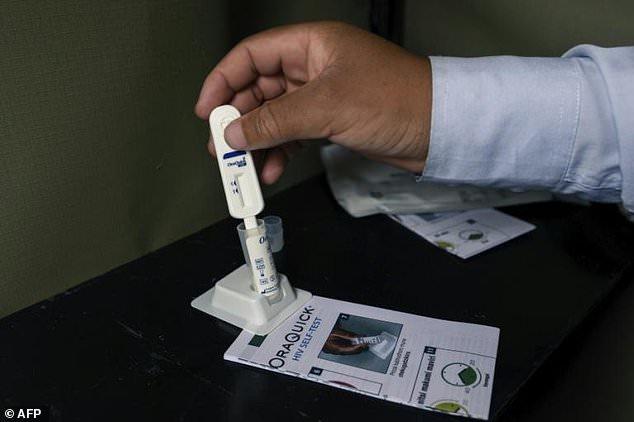
HIV self-test prices to be slashed in half in 135 countries
Poorer countries are set to see their access to HIV self-tests increase dramatically following a deal to slash prices in half and boost production, Unitaid said Wednesday.
The international health agency said it had closed a deal with US-based global healthcare company Viatris that will see blood-based HIV self-tests made available for under $2 across 135 low and middle-income countries.
HIV self-tests are seen as vital tools to help people more easily discover their status and move towards the treatment they need, and thus also to reducing the HIV burden globally.
This is particularly relevant in poorer countries, where concerns around stigma and difficulties accessing healthcare can create significant barriers, said Unitaid, which works on innovations on major diseases.
“Access to self-tests has been recognised as a key factor in meeting the global goal of 90% of people knowing their HIV status,” Unitaid spokesman Herve Verhoosel said in a statement.
In just the past six years, that rate has nearly doubled, from 45 to 81 percent, he said.
But achieving broader testing has been hampered by the fact that the market for HIV self-tests in low- and middle-income countries has been dominated by a single affordable oral HIV test, the OraSure.
That test is sold at cost in a limited number of poorer countries for $2, but elsewhere the price is higher, and other options have cost significantly more.
– Eight million unaware of status –
To try to fix that problem, Unitaid and US non-profit Population Services International (PSI) launched a call for proposals last July on ways to drive forward access to the tests.
The result was the Viatris deal, which Unitaid said should significantly expand the market and give countries more choice when it comes to self-tests.
This, Verhoosel said, would make “it easier to acquire the products and embed them in health systems, with the ultimate aim of helping the eight million people estimated to be unaware of their HIV status know they are infected and get treatment.”
Meg Doherty, who heads the World Health Organization’s global HIV, hepatitis and STI programmes, hailed “the wider availability of affordable HIV self-testing kits to increase access to testing.”
She said Wednesday’s announcement was timely at a time when the Covid-19 pandemic had in many places complicated access to a range of HIV services.
Self-testing allows “people to test when other options are difficult to access or restricted,” she said.
In addition to Viatris, Unitaid said another recently developed blood-based HIV self-test from US-based health care company Abbott Laboratories, which is currently undergoing regulatory review, would also be part of the expanded Unitaid programme, which would see around one million tests distributed “to stimulate in-country demand”.
WHAT IS PANCAP?
PANCAP is a Caribbean regional partnership of governments, regional civil society organisations, regional institutions and organisations, bilateral and multilateral agencies and contributing donor partners established on 14 February 2001. PANCAP provides a structured and unified approach to the Caribbean’s response to the HIV epidemic, and coordinates the response through the Caribbean Regional Strategic Framework on HIV and AIDS to maximise efficient use of resources and increase impact, mobilise resources and build the capacity of partners.
What are the Global AIDS Strategy 2021–2026 targets and commitments?
If targets and commitments in the strategy are achieved:
- The number of people who newly acquire HIV will decrease from 1.7 million in 2019 to less than 370 000 by 2025
- The number of people dying from AIDS-related illnesses will decrease from 690 000 in 2019 to less than 250 000 in 2025.
- The goal of eliminating new HIV infections among children will see the number of new HIV infections drop from 150,000 in 2019 to less than 22,000 in 2025.
What are the 95-95-95 Targets for ending AIDS?
- 95% of People Living with HIV know their HIV status;
- 95% of people who know their status on treatment; and
- 95% of people on treatment with suppressed viral loads.
HELPFUL LINKS:
Global AIDS Strategy 2021–2026, End Inequalities, End AIDS
https://pancap.org/pancap-documents/global-aids-strategy-2021-2026-end-inequalities-end-aids/
Caribbean Regional Strategic Framework on HIV and AIDS (CRSF) 2019-2025
https://pancap.org/pancap-documents/caribbean-regional-strategic-framework-2019-2025/
